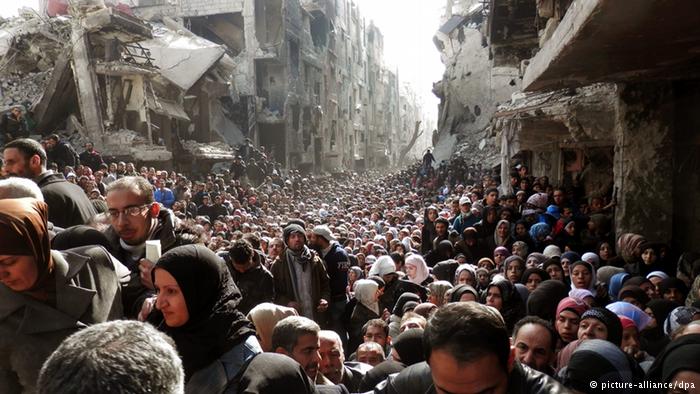The Women, Peace and Security Agenda is an international policy framework developed by the security council which for the first time recognized the importance of acknowledging and integrating women’s experience into issues of peace and security. The women, peace and security agenda includes the pioneering security council resolution 1325 which was unanimously passed by the united nations security council on 31 October 2000 calling for women participation in peacebuilding and peace negotiations, as well as, calling for protecting women during conflict. Besides, the Security Council passed a subsequent women, peace and security resolutions to support 1325 resolution: 1820 (2008), 1888(2009), 1960 (2010), 2106 (2013) and 2122 (2013).
The origins of 1325 lie in the UN world conferences on women, where the issue of women, conflict and peace received intense debate at the Third World Conferences on women in Nairobi in 1985. Besides the Beijing Platform for Action adopted at the Fourth World Conference on women in 1995, and it emphasized on the importance of gender perspective and women’s contributions for sustainable peacebuilding.
The Masculinized Language of the Resolutions
The resolutions adoption is considered for many as an important step for the Security Council to recognize the importance of acknowledging women experiences in conflicts and post conflict situations and their contribution to conflict resolution and prevention. However, the language is used in the resolution is explicitly seeking for increased participation of women in the conflict prevention process, and implicitly is using a masculinized language when it treats women as victims of war, in need of protection. The call for protection and participation of women at the same time contradicts the objectives of women movement and feminist for gender equality, and reinforce the notion of victimizing women as they are always the victims of wars. While in fact the history of wars had witnessed women as combatants and men as victims.
The way women are defined as victims and vulnerable undermines women ‘agency, and rejects gender mainstreaming in the three types of peace, peacekeeping, and peacemaking, and peacebuilding , although the UNSC resolution 1325 calls for recognizing the urgent need to mainstream a gender perspective into peacekeeping operations. However, we cannot ensure the gender mainstreaming without changing the relationship between masculinized protectors and the feminized protected.
The UN Security Council called all nations to implement the women, peace and security resolution in their national action plans, in spite of the fact that this call sounds rhetoric. A 2008 UNIFEM review shows the extent of women’s absence in the peace negotiation processes orchestrated by the UN. Reviewing 14 out of 35 major peace negotiations since the adoption of 1325, and the study found that only 1.2 per cent of signatories to peace agreements were women, and women accounted for an average 9.6 per cent of negotiation delegations.
The Association of Women to Children
The UN Security Council resolution 1888 mandates that peacekeeping missions protect women and children from sexual violence during armed conflicts. This resolution like many other mandates of the UNSC when women are associated with children especially when it comes to protection. Charli Carpenter, in her study “Innocent Women and Children, Gender, Norms and the Protection of Civilians” of the use of the terms men, women and children in Security Council documents on the protection of civilians from 1999 to 2003, found that the association of women and children was used 163 times compared with much less frequent use of women as combatants six times and men as vulnerable only mentioned once. The findings in her study have raised a question on why children are associated to women and not to men, and how active participation of women can be promoted in peace and conflict resolution, since they are understood primarily as caretakers of children affected by wars. This masculinity language promote the dominant social position of men as protectors and authoritative, and subordinate social position of women as victims, vulnerable and by extension their needs are defined similarly according to the needs of children. This stereotyped gender roles reinforce gender differences and inequalities.
The Rhetoric Aspect of the Agenda
It is worth mentioning that the Women, peace and Security was seen by many as a great victory for women activists, however it has encountered many obstacles and flaws. More importantly, the Security Council subsequent resolutions and the pioneer UNSCR 1325 are not treaties, and consequently there are no mechanisms for ratification or verification; lack the Security Council to compel states to comply. Furthermore, there are no accountability mechanisms that keep track of how the peacekeeping operations implements the resolutions in its daily work in the conflicted areas.
In May 2008, the United Nations High Commissioner for Refugees (UNHCR) conducted an study that highlighted the link between the gender of individuals who lead peace operations and the levels of advocacy regarding the promotion of women. The study found that female officials at a high level are far more likely than men in similar positions to advocate for the increased role of women in peace and security operations, by invoking Security Council resolution 1325. However, at the time of the study, only six women were listed among the 66 managers occupying top management positions in UN peacebuilding. This study explains the very weak implementation of resolution 1325 whithin the UN institutions themselves, and this does not make UN a role model for the other countries to promote women participation in the peacebuilding process especially in the conflicted countries. Moreover, in another study carried out by Aroussi, she showed that 8 years after 1325 only 50 out of the 112 peace agreements signed since mentioned women or gender, and always in a very vague terms.
Indeed, the Women, Peace and Security agenda with its resolutions is a rhetoric as it was specified above, and to elaborate this is an example for the impractical of the Women, peace and security. In Yemen, the United Nations Security Council Resolution 2014 calls “ upon all concerned parties to ensure the protection of women and children, to improve women’s participation in conflict resolution and encourage all parties to facilitate the equal and full participation of women at decision-making levels”. This international discourse on women’s participation raises questions if UNSC really intend to enhance women’s participation during transition, while there is no enforcement mechanism and how the UN discourse of protecting women may or may not contradict with the discourse of encouraging women to participate.
Author : Ghaidaa Motahar Alabsi





